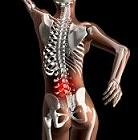Advertisment
Osteo Rx combo betters alternatives

Most currently available osteoporosis drugs like denosumab are antiresorptive: they curb bone loss by blocking the action of cells that break down bone (osteoclasts) during the normal process of bone remodelling. In contrast, teriparatide stimulates the creation of new bone by increasing the activity of osteoblasts. Until now, attempts to combine these approaches have not been successful.
In the DATA study, a team from Massachusetts General Hospital in Boston randomly assigned 94 postmenopausal women with osteoporosis to treatment with either teriparatide (20 micrograms daily), denosumab (60 mg every 6 months), or both drugs for 12 months.
The researchers measured changes in lumbar spine, hip bone, and femoral neck using low-dose x-rays (dual energy x-ray absorptiometry, or DXA) and bone biomarkers at the beginning of the trial, and at 3, 6, and 12 months.
The combination therapy was significantly better than either drug alone at improving BMD at the spine, hip, and femoral neck. One year improvements in femoral neck (4.2%) and hip (4.9%) BMD in the combined group were greater than previously reported for any approved treatment. Bone formation was also reduced less in women given combination therapy than in those receiving denosumab alone.
According to lead author Benjamin Leder, “Our results demonstrate that the combination of denosumab and teriparatide increases bone density more than either individual therapy, most likely because denosumab is able to potently block bone resorption (loss) even when given along with a bone-building agent like teriparatide. While additional studies are needed, the results suggest that this combination may prove to be an effective osteoporosis treatment in women at especially high risk of fracture”*
Writing in a linked Comment, Richard Eastell, Director of the Mellanby Centre for Bone Research and Jennifer Walsh from the University of Sheffield in the UK say, “Whether the combination remains effective needs to be investigated, however, because at 12 months mean concentrations of the bone formation marker PINP no longer differed between the denosumab-alone and combination-therapy groups. The safety of this combination therapy also needs to be explored, as does what happens when teriparatide is stopped (the licence only supports use for a maximum of 24 months). Finally, the reduction in fracture risk needs to be quantified so that cost-effectiveness can be assessed.
Further information contact: Dr. Benjamin Leder
bzleder@partners.org





